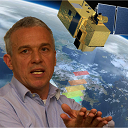Novel Approaches for Mapping and Monitoring of Vegetation Properties from Earth Observation (EO) Data in an Agricultural Context
A special issue of Remote Sensing (ISSN 2072-4292). This special issue belongs to the section "Remote Sensing in Agriculture and Vegetation".
Deadline for manuscript submissions: closed (31 July 2020) | Viewed by 8533
Special Issue Editors
2. Mantle Labs GmbH, Vienna, Austria
Interests: agriculture; hybrid retrieval; hyperspectral remote sensing; machine learning methods; active learning
Special Issues, Collections and Topics in MDPI journals
Interests: pattern recognition; image processing; computer vision; image analysis; feature selection; wavelet; calibration; classification; hyperspectral image analysis; hyperspectral remote sensing
Special Issues, Collections and Topics in MDPI journals
Interests: remote sensing of vegetation with focus on time series analysis and use of physically based radiative transfer models for mapping biochemical and biophysical traits
Special Issues, Collections and Topics in MDPI journals
Interests: imaging spectroscopy with a focus on urban surface materials; spaceborne imaging spectroscopy missions; EnMAP; DESIS; earth observation for soil information; applied spectroscopy
Special Issues, Collections and Topics in MDPI journals
Interests: remote sensing; spectral imaging; image processing; precision agriculture; horticulture; disease detection
Special Issues, Collections and Topics in MDPI journals
Special Issue Information
Dear Colleagues,
The use of digital information for more efficient cultivation of large areas has become a part of agricultural practices worldwide. In this context, the use of satellite data allows for the regular and cost-effective quantification of biophysical and biochemical variables with increasingly fine spatial and spectral resolutions. Such monitoring is essential for understanding the state and dynamics of the cropped surface which, in turn, facilitates consideration of the environmental impacts of agricultural practices. Classical canopy traits involve leaf area index (LAI), chlorophyll content (Cab), fractional vegetation cover (fCover), fraction of absorbed photosynthetically active radiation (fAPAR), aboveground biomass (AGB), as well as leaf/canopy water content (EWT/CWC). However, the estimation of more subtle or non-state variables, such as the contents of protein, nitrogen, leaf carotenoid, and anthocyanin, or non-photosynthetically active vegetation (lignin + cellulose), is also of great interest to agricultural service providers. Given the vast data streams of upcoming spaceborne imaging spectroscopy missions, fast and efficient retrieval techniques—exploiting the full spectral range—should be developed. Techniques which can be implemented onboard are particularly valuable as they reduce the data downlink bottleneck faced in hyperspectral satellite imaging. This can be realized, for instance, by machine learning regression algorithms (MLRAs) able to handle the strong nonlinearity between observed reflectance signals and biophysical/biochemical traits. Those MLRAs also offer an interesting linkage to radiative transfer models (RTMs), where the latter provide the necessary training databases without the requirement for in situ data. These so-called “hybrid approaches” combine the generic properties of RTMs with the flexibility and efficiency of nonparametric methods and, therefore, can be used to exploit the vast superspectral and imaging spectrometer data streams for application in agricultural areas.
This Special Issue strongly encourages contributions aimed at estimating the biochemical and biophysical quantities in an agricultural context using the full range of available optical remote sensing data, and that capitalize upon statistical nonparametric, physically based, or innovative hybrid methods.
This Special Issue was also established to collect contributions for the related Special Session “Novel Approaches for Agricultural Monitoring” of the Whispers conference, taking place in Amsterdam, the Netherlands, on 24–26 September 2019.
Dr. Katja Berger
Prof. Dr. Clement Atzberger
Dr. Uta Heiden
Dr. Stephanie Delalieux
Dr. Stefan Livens
Guest Editors
Manuscript Submission Information
Manuscripts should be submitted online at www.mdpi.com by registering and logging in to this website. Once you are registered, click here to go to the submission form. Manuscripts can be submitted until the deadline. All submissions that pass pre-check are peer-reviewed. Accepted papers will be published continuously in the journal (as soon as accepted) and will be listed together on the special issue website. Research articles, review articles as well as short communications are invited. For planned papers, a title and short abstract (about 100 words) can be sent to the Editorial Office for announcement on this website.
Submitted manuscripts should not have been published previously, nor be under consideration for publication elsewhere (except conference proceedings papers). All manuscripts are thoroughly refereed through a single-blind peer-review process. A guide for authors and other relevant information for submission of manuscripts is available on the Instructions for Authors page. Remote Sensing is an international peer-reviewed open access semimonthly journal published by MDPI.
Please visit the Instructions for Authors page before submitting a manuscript. The Article Processing Charge (APC) for publication in this open access journal is 2700 CHF (Swiss Francs). Submitted papers should be well formatted and use good English. Authors may use MDPI's English editing service prior to publication or during author revisions.
Keywords
- Cropland status and dynamics
- Crop biophysical and biochemical variables
- Precision agriculture
- Imaging spectrometer missions
- Superspectral missions
- Machine learning regression algorithms
- Radiative transfer modeling
- Onboard techniques
- Hybrid inversion techniques









